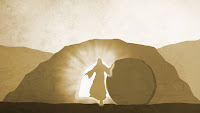“The Son is the radiance of God’s glory and the exact representation of his being, sustaining all things by his powerful word. After he had provided purification for sins, he sat down at the right hand of the Majesty in heaven” (Heb 1:3).
After Jesus’ resurrection, he visited with his disciples off and on for 40 days. Then “he was taken up before their very eyes, and a cloud hid him from their sight” (Acts 1:9). He ascended into heaven and sat down at the right hand of his Father (Heb 1:3).
So what is he doing now? Is he retired? Is he just killing time until the Father sends him back? No, Christ has a very active role. Let’s look at three things he is doing right now.
First and foremost, Christ is reigning with his Father. God has “raised Christ from the dead and seated him at his right hand in the heavenly realms, far above all rule and authority, power and dominion, and every name that is invoked, not only in the present age but also in the one to come” (Eph 1:20-21). Being seated at the right hand is a position of authority.1 The Son now shares in the Father’s rule. “All authority in heaven and on earth” has been given to him (Matt 28:18). That little word “all” is very interesting. It means ... all. Everything in the universe is under his control just as it was before his incarnation. There is no part of his creation that is out of his control -- not hurricanes, nor viruses, nor demons. And everything is dependent on him; he sustains all things by his powerful word (Heb 1:3, Col 1:17). Everything continues to exist only because Christ wills it. My Savior, the one who loved me and gave himself for me is running the universe. What have I to fear?
And one day, we will reign with him. The scriptures say that we have been “seated ... with him in the heavenly places” (Eph 2:6). God’s plan is that we should rule with our elder brother to the praise of his glorious grace (Eph 2:7).
Second, Christ is representing us to his Father. Christ is our mediator with God (1Tim 2:5). He intercedes for us to his Father (Heb 7:25, Rom 8:34). He is our advocate with the Father (1John 2:1). The one who became a man, who was tempted as we are, who then covered our sins with his blood stands between God and man as our great High Priest.
“Therefore, since we have a great high priest who has ascended into heaven, Jesus the Son of God, let us hold firmly to the faith we profess. For we do not have a high priest who is unable to empathize with our weaknesses, but we have one who has been tempted in every way, just as we are—yet he did not sin. Let us then approach God’s throne of grace with confidence, so that we may receive mercy and find grace to help us in our time of need” (Heb 4:14-16).
Third, Christ is preparing a place for us. The night that he was betrayed, the Lord told his disciples, “My Father’s house has many rooms; if that were not so, I would have told you. I am going there to prepare a place for you. And if I go and prepare a place for you, I will come back and take you to be with me that you also may be where I am” (John 14:2-3).
Tony Evans says, “The ascension is vitally important to our hope for tomorrow and for eternity. ... Because Jesus went somewhere, we have somewhere to go. And just as Christ ascended to heaven, you and I will leave this earth someday and ascend to heaven because Jesus is coming back for us. If the ascension is true, then heaven is true.”2 Heaven is real, and Jesus wants us to be with him. And Jesus is going to come set everything right. But that’s a topic for another time.
James Montgomery Boice says, “It is always difficult to measure one’s own spiritual maturity. But there is a sense in which one can assess it generally by the dominant image one has of Jesus Christ.”3 He is no longer the baby in the manger; he’s not still hanging on the cross. Christ is now the ruling and reigning Lord. Live like he’s the King of the universe. Pray like he’s interceding for you. Hope like you have been promised an eternal home. “Our destiny has been secured by our conquering hero, the ascended Christ, seated at God’s right hand.”4
There’s so much more that could be said. I recommend “The Uniqueness of Christ in His Ascension and Present Ministry” in Tony Evans’ Theology You Can Count On.
1 Wayne Grudem, Systematic Theology
2 Tony Evans, Theology You Can Count On
3 James Montgomery Boice, Foundations of the Christian Faith
4 Rick Cornish, 5 Minute Theologian
Image credit: Ronny Overhate from Pixabay













